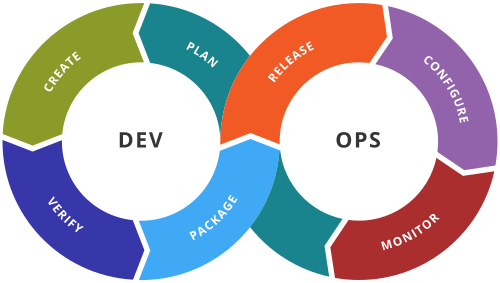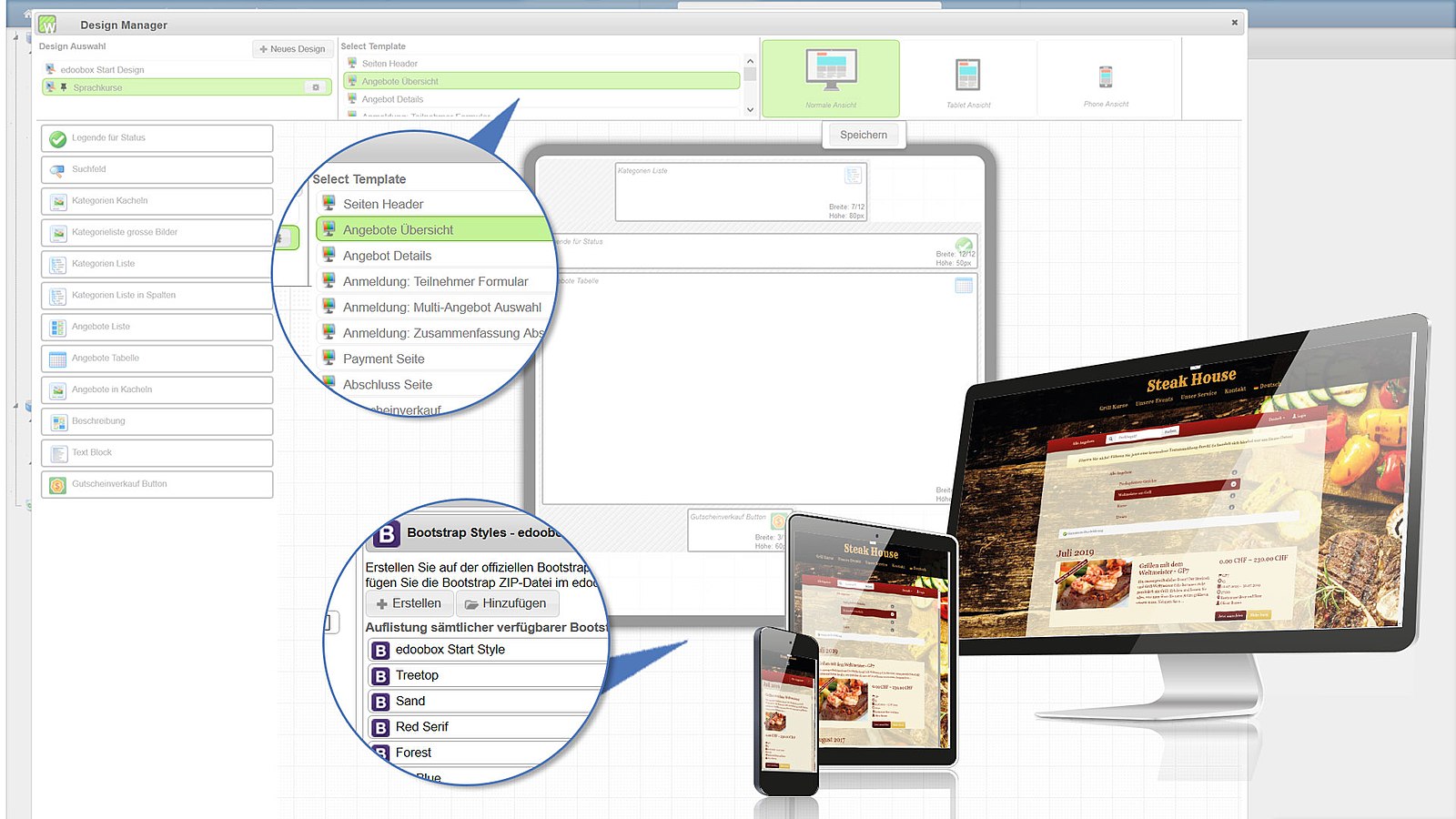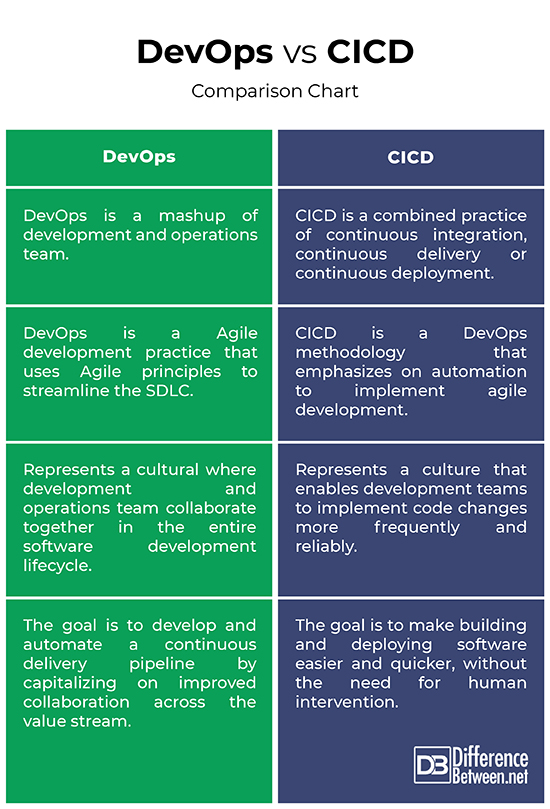Difference Between DevOps and CICD
Building modern applications is hard because there are multiple groups or teams involved in the whole software development and delivery process, such as developers, IT operations, quality analysts, product owners, customer support, and sales. Sometimes, the software is complex and becomes more complex over time. Even a small change in code can lead to many distinct unexpected bugs that may not be rectified in time. So, a process is required by which the development is done in automated ways as it is being built. The process of Continuous Integration and Continuous Delivery ensures software is being tested automatically before it is released, and it is of highest quality and adheres to the latest standards when delivered to the end users. These are the outcomes that result from DevOps.

What is DevOps?
DevOps is not a methodology. It is not a tool or technology either. Then what is DevOps? Imagine a world where developers, QA, IT Operations, and Infosec work together, not only to assist each other but to increase overall organizational productivity. By working toward a common goal, they enable the fast flow of planned work into production, while achieving stability, reliability, and security. So, DevOps is a culture that involves people, processes and tools to achieve faster time to deliver applications and services with the highest quality by Continuous Improvement and Continuous Innovation. In simple terms, DevOps is a mashup of development and operations team. It is the practice of development and operations team collaborating together in the entire software development lifecycle and creating systems that enable the teams to be more productive and get better outcomes. The DevOps approach ensures that the developers and the people from operations are on the same page at all stages.

What is CICD?
CICD, or CI/CD is a combined practice of continuous integration, continuous delivery, and continuous deployment. CICD is a concept that goes by many names but basically shares the same idea. CI/CD embodies a culture that enables development teams to implement code changes more frequently and reliably. So, let’s start with continuous integration or CI. Continuous integration is the process of automatically validating software as soon as it’s checked into source control, which more or less guarantees that the software works smoothly after the new code has been written. The name continuous implies that a developer is continuously integrating software components while developing software. Continuous delivery ensures that the software can be released reliably whenever needed, and deployment happens often and quickly. Continuous deployment succeeds continuous delivery and automates the entire process of deploying software to customers. If CI and CD could be summarized with one word, it would be automation.
Difference between DevOps and CICD
Concept
– DevOps is the practice of development and operations team collaborating together in the entire software development lifecycle and creating systems that enable the teams to be more productive and get better outcomes. CI/CD stands for Continuous Integration, Continuous Delivery or Continuous Deployment, and represents a culture that enables development teams to implement code changes more frequently and reliably. CI/CD pipeline provides developers solution to the problems that arise from integrating new code. If CI and CD could be summarized in one word, it would be automation.
Goal
– The DevOps approach ensures that the developers and the people from operations are on the same page at all stages of a software development project, from development through to production. The goal is to develop and automate a continuous delivery pipeline by capitalizing on improved collaboration across the value stream. CI/CD, on the other hand, focuses on software-defined lifecycles making use of the right automation tools to implement agile development. The goal is to minimize the risk of errors, and make building and deploying software easier and quicker, without the need for human intervention.
Methodology
– The Agile methodology focuses mainly on fast delivery, and CI helps Agile in achieving that speed. CI automatically validates software as soon as it’s checked into source control, which more or less guarantees that the software works smoothly after the new code has been written. Continuous Delivery or CD ensures that the software can be released reliably whenever needed, and deployment happens often and quickly. DevOps, on the other hand, is a methodology that brings a cultural transformation to the production infrastructure by combining development team and operations team together and thereby, promoting continuous integration, continuous delivery, and transparency in code repositories.
DevOps vs. CICD: Comparison Chart

Summary
DevOps is more about people, processes and tools. It represents a culture that involves people, processes and tools and aims at unifying software development by bringing down the barriers between the development and operations teams, so that they could work together and collaborate together toward a common goal. By adopting the DevOps culture, the cross-functional teams actively ensure their workflows run smoothly and frequently through the entire value stream without causing any bottlenecks for other teams or the customer. CI/CD is a DevOps tactic that makes sure building and deployment process is smooth, easier and quicker, without any human intervention. CICD emphasizes on automation in building, testing and deployment of applications.
- Difference Between Caucus and Primary - June 18, 2024
- Difference Between PPO and POS - May 30, 2024
- Difference Between RFID and NFC - May 28, 2024
Search DifferenceBetween.net :
Leave a Response
References :
[0]Kim, Gene et al. The DevOps Handbook: How to Create World-Class Agility, Reliability, and Security in Technology Organizations. Portland, Oregon: IT Revolution Press, LLC, 2016. Print
[1]Rossel, Sander. Continuous Integration, Delivery, and Deployment: Reliable and Faster Software Releases with Automating Builds, Tests, and Deployment. Birmingham, United Kingdom: Packt Publishing, 2017. Print
[2]Belmont, Jean-Marcel. Hands-On Continuous Integration and Delivery: Build and Release Quality Software at Scale with Jenkins, Travis CI, and CircleCI. Birmingham, United Kingdom: Packt Publishing, 2017. Print
[3]Pathania, Nikhil. Learning Continuous Integration with Jenkins: A Beginner's Guide to Implementing Continuous Integration and Continuous Delivery Using Jenkins 2, 2nd Edition. Birmingham, United Kingdom: Packt Publishing, 2017. Print
[4]Image credit: https://commons.wikimedia.org/wiki/File:Personalisierung-an-Ihr-CI-CD-mit-BootStrap-responsiv_Design.jpg
[5]Image credit: https://upload.wikimedia.org/wikipedia/commons/thumb/0/05/Devops-toolchain.svg/500px-Devops-toolchain.svg.png
